Step-by-Step Guide to Bazi Marriage Compatibility Analysis
5/29/2025, 10:22:03 PM
Bazi compatibility analysis follows a relatively complete and systematic process, typically proceeding from simple to complex, and from individual to combined analysis. The general procedure is as follows:
- Chart Extraction: First, collect both parties’ birth year, month, day, and time, and generate their individual Bazi charts. Determine their year, month, day, and hour pillars — both Heavenly Stems and Earthly Branches — as well as additional information such as Life Palace, Na Yin, and Fetal Element. This foundational step reveals key data like each person's Day Master element, chart strength, and overall structure, laying the groundwork for further compatibility analysis. Usually at this stage, the practitioner will individually assess each chart's overview, especially marriage-related indications. For instance, they examine whether the husband star appears clearly and unharmed in the man’s chart, and whether the wife’s officer star is favorable and stable. They also look for signs of early/late marriage tendencies, multiple marriages, or other disruptions. The goal is to understand the inherent romantic potential of each party. If one chart shows serious negative signs regarding marriage (e.g., a heavily afflicted spouse star or ominous symbolic stars), special attention is required. As compatibility experts say: “If one party’s Bazi is poor and contains harmful marital indicators, a happy marriage is unlikely.” Thus, the individual marital foundation must be clarified before assessing the compatibility of the pair.
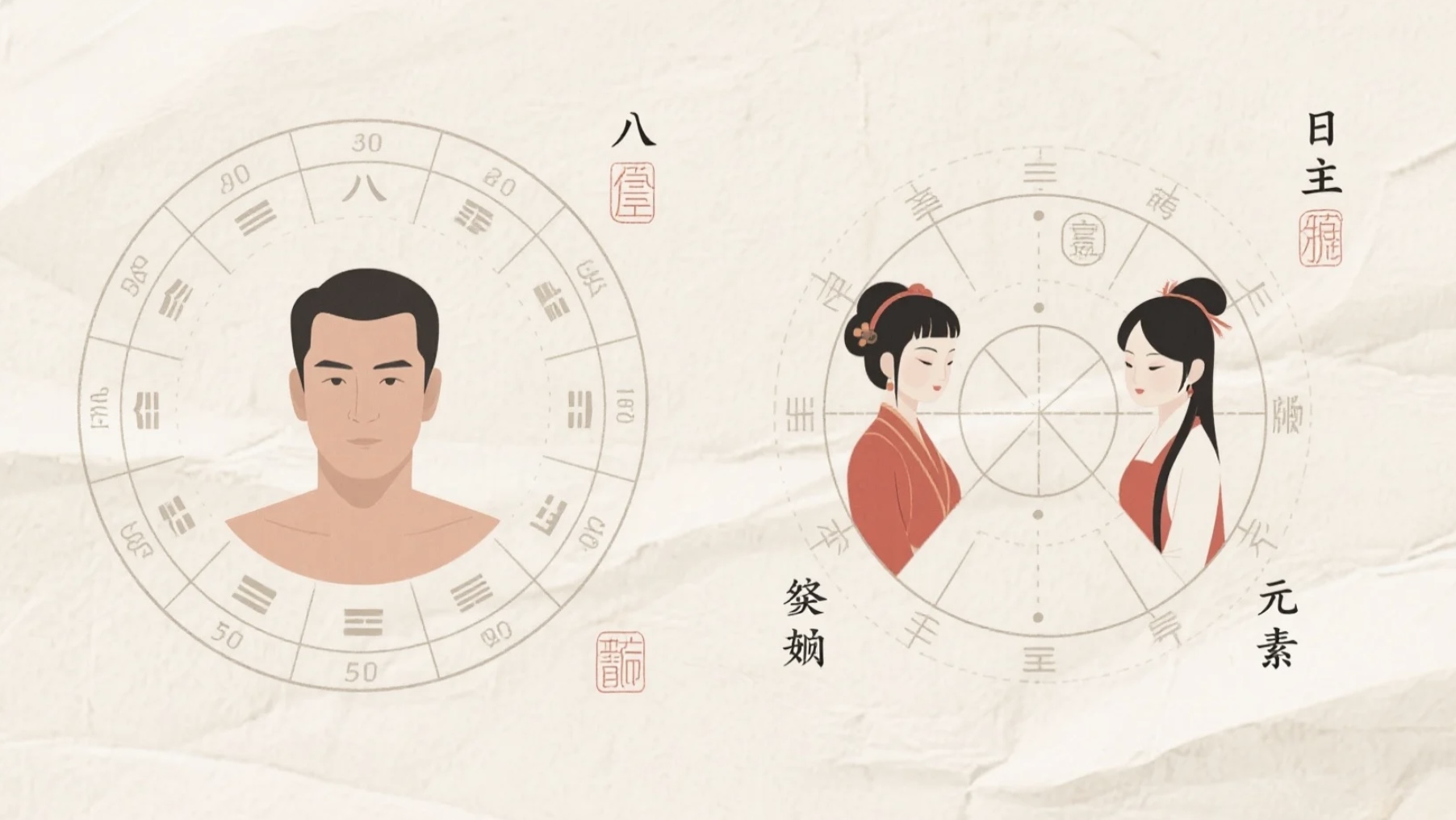
- Personality and Values Comparison: Based on the Ten Gods and the balance of Five Elements, analyze the personalities, core beliefs, and lifestyle habits of both parties to determine compatibility. This is akin to modern psychological matching but uses metaphysical insights. For example, if one chart indicates introversion and conservatism, does the other show extroversion and optimism — suggesting complementarity? Or are both highly assertive, potentially leading to conflict? Chart elements like Indirect Resource or Eating God reveal personality traits: a strong Indirect Resource suggests introversion, while a strong Eating God indicates optimism and openness. This phase assesses whether personalities complement or clash. If charts show high personality compatibility and shared values, real-life cooperation will be smoother. Conversely, extreme differences — e.g., one person’s strong Seven Killings makes them hot-tempered, while the other’s strong Hurting Officer indicates constant complaining — may foretell frequent conflicts. This stage is essentially a pre-marital personality match assessment, helping to answer the question, “Can these two live together harmoniously?”

-
Favorable Elements and Five Element Complementarity: Next, assess whether the two charts' favorable and unfavorable elements are compatible. This involves comparing the elemental composition of both charts — whether one person’s lacking or desired element is abundant in the other’s chart, and vice versa. If their elements support each other, and one’s favorable elements are present in the other’s chart, this is seen as a fortunate match. For instance, if one party has weak Water and favors it, while the other has strong Water, this pairing is like “rainfall on a drought” and considered mutually beneficial. As Bazi masters say: “If one’s shortcomings are compensated by the other’s strengths — especially if they are favorable — the match is auspicious.” Conversely, if their favorable elements clash — such as one needing Metal while the other’s Metal is excessive and harmful — their union could amplify imbalance and be detrimental. This stage evaluates the harmony of energetic interaction: complementary elements enhance each other’s fortune, conflicting ones may drag each other down. Clear elemental conflict here can be a red flag, requiring further examination and possible remedies.
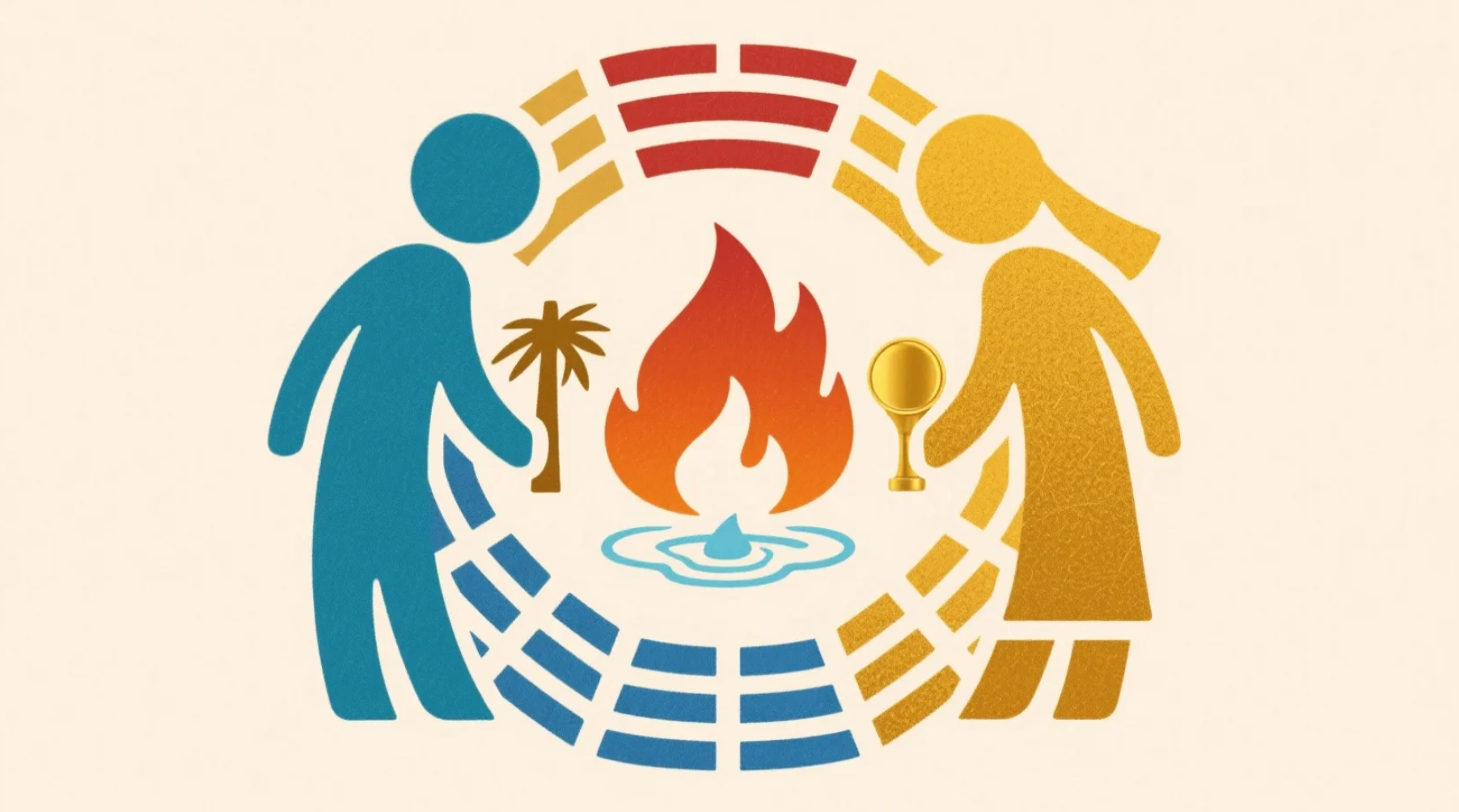
-
Day Pillar and Spouse Star Comparison: This is one of the most critical steps, focusing on the spouse stars and spouse palace. First, identify the man's Wife Star (Wealth Star) and the woman’s Husband Star (Officer Star), along with their respective Day Branches (Spouse Palace). Then assess whether the Day Stems and Branches show harmonious or conflicting relationships. Ideally, Day Stems should combine or support each other, and the Day Branches should be compatible or at least not in conflict. For example, if the man’s Day Stem is Jia Wood and the woman’s is Ji Earth — Jia and Ji combine into Earth (if Earth is favorable) — this indicates a highly auspicious marriage, with unity and shared goals. Similarly, if his Day Branch is You Metal and hers is Chen Earth, their union forms a harmonious Branch combination. On the other hand, Heavenly Stems clashing or Earthly Branches conflicting — such as aggressive Seven Killings or a Zi-Wu (Rat-Horse) Branch clash — is an inauspicious sign. The Day Branch (Spouse Palace) has a direct impact on marital quality: if the palaces clash, the marriage is unstable unless neutralized by other combinations. This step involves listing all stem-branch relationships: Heavenly Combinations and Earthly Combinations (ideal), Heavenly Clashes and Earthly Conflicts (worst), and special bonds like Five Stem Combinations or Six Branch Combinations. This reveals the inherent marital compatibility. If clashes exist, mitigation is sought, such as other elements that reduce the impact. Overall, this stage determines whether the couple’s core marriage positions — the Day Pillars — align or conflict, directly influencing the compatibility conclusion.
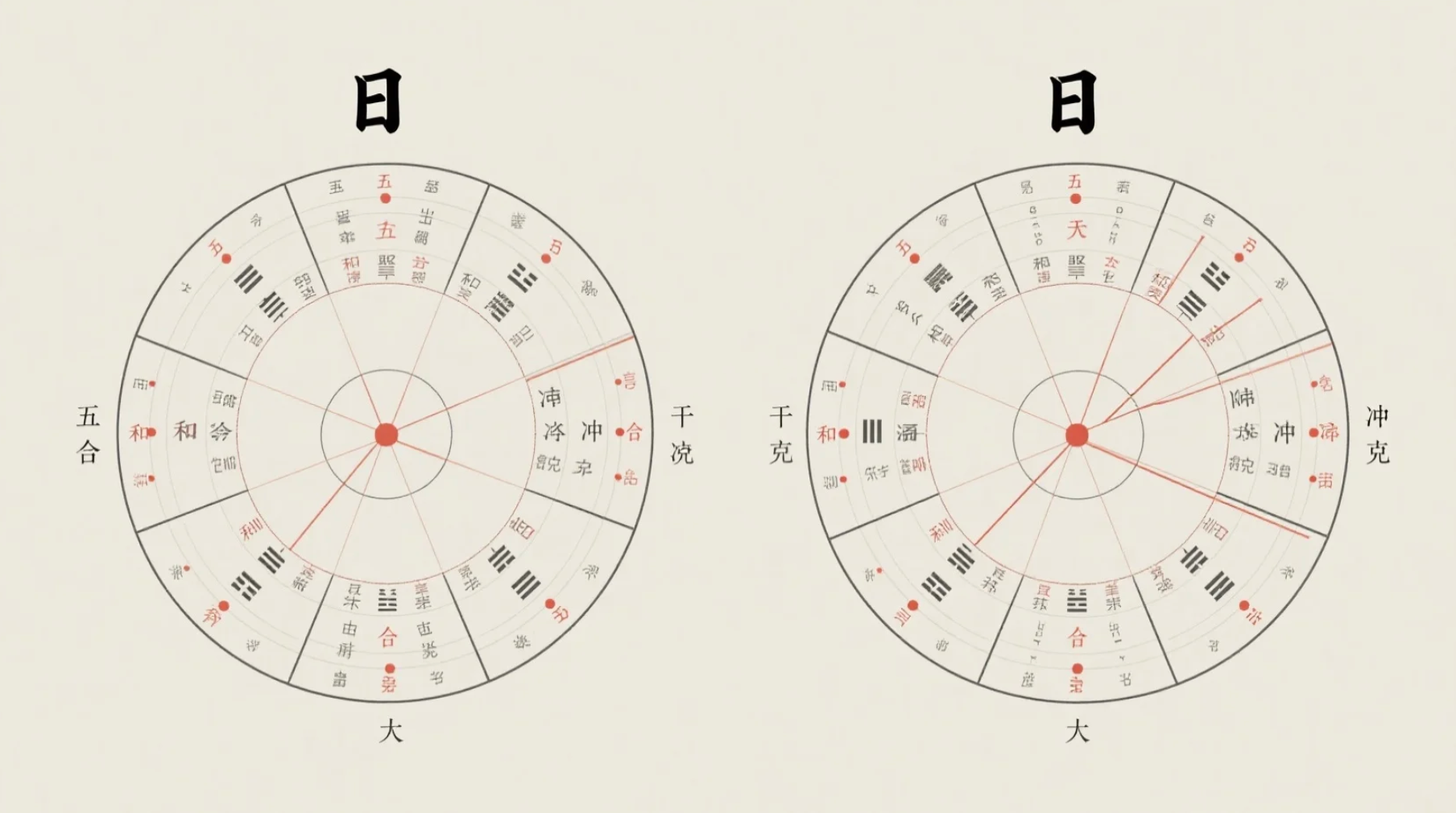
-
Comprehensive Check of Clashes and Other Factors: After evaluating the Day Pillar, the analysis extends to other pillars and elements to ensure nothing is overlooked that may impact the marriage. For instance, check whether the Year Pillars contain Heavenly Combinations or Clashes, or Earthly Three Combinations or Six Conflicts; the Month Pillars (representing family background) for compatibility; and the Hour Pillars (representing children and later life) for any significant clashes or combinations. Particular attention is paid to inauspicious symbolic stars. For example: Symbolic Star Method — if the man’s chart contains “Solitary Star” or “Child Star,” these suggest marital problems; or if the woman’s chart has “Iron Broom,” it may foretell instability. Also, check for traditional folk taboos like “Six Clash Years” or so-called “Severed Head Marriages.” Each case is evaluated for severity based on the full chart context. From the Six Relations Method, assess how the spouse star and palace behave: is a strong Rival Star in the man’s chart balanced by a strong Hurting Officer in the woman’s chart? Or does the man’s strong Resource star protect the woman’s weak but favorable Officer Star? Such combinations may turn into complementary matches. This stage acts like a full medical check-up, overlaying both charts to analyze all key interactions, highlighting helpful and harmful factors.

-
Future Luck Cycles and Marriage Timing: After completing static chart analysis, dynamic elements such as Ten-Year Luck Pillars and Annual Luck are considered, especially whether the couple’s marriage-related years align. Experienced practitioners check when each party is due for a romantic or marital phase, and whether these coincide. If one is destined to marry in a given Luck Pillar, but the other is entering a phase of marital misfortune or emptiness, the future becomes uncertain. This assesses whether the couple is truly destined to be together. If marriage signs emerge simultaneously, the chances of union increase. Common techniques include: Annual Match Check — if both parties hit Peach Blossom or Red Luan stars in the same year, marriage is likely; otherwise, if only one has such signs, it may not materialize. They also examine long-term cycle harmony — if one has a career rise while the other faces decline, such “cycle mismatch” may harm the relationship. This stage predicts long-term dynamics: will they thrive together, or will one drag the other down? If mismatch is found, advice may be given to avoid certain marriage years or strengthen mutual support after marriage.
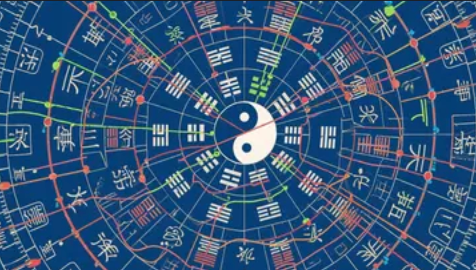
-
Final Evaluation of Marital Compatibility: Finally, the practitioner synthesizes all factors and provides a comprehensive assessment. This typically includes strengths (e.g., complementary elements, harmonized Day Pillars, synchronized cycles) and weaknesses (e.g., clashes, harmful stars). Some schools use a quantitative scoring system. For example, the Di Tian Sui school assigns 50% to core stars and spouse palace, 30% to element compatibility, and 5–10% to individual chart strength. Based on the interaction of generating, controlling, and combining elements, they calculate a total score and classify the match as “Excellent, Acceptable, Average, or Inadvisable.” Example: “Your Bazi compatibility is over 70, an excellent match — a union blessed by Heaven”; “Around 60 points is an average match that may require effort”; “Below 50 suggests clear incompatibility — proceed with caution.” Most reports don’t just give a number, but also detailed explanations: “You complement each other, Day Pillars support each other, spouse stars are favorable — strong foundation for marriage,” or “There are more clashes than combinations, and your favorable elements conflict — likely friction after marriage.” In addition, the report offers remedies and suggestions: if compatibility is weak, how to mitigate (e.g., using Feng Shui to balance elements, choosing an auspicious wedding date, or wearing protective talismans); if compatible, how to maintain harmony. Senior masters stress the importance of delivering the conclusion objectively and constructively, pointing out issues but also offering hope and solutions.
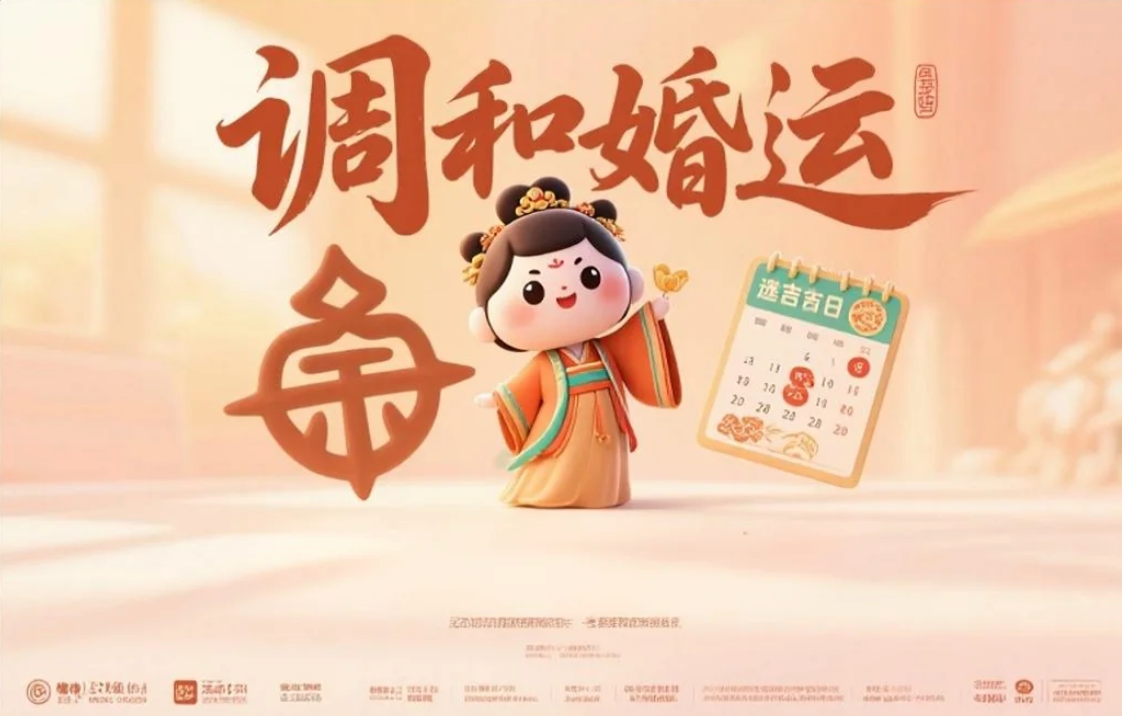
Following these steps, a complete Bazi compatibility analysis is achieved. From chart generation, personality, elements, Day Pillars, symbolic stars to luck cycles — each step builds upon the last. This logical progression considers individual destiny and interpersonal interaction, ultimately delivering a reliable marital compatibility conclusion.